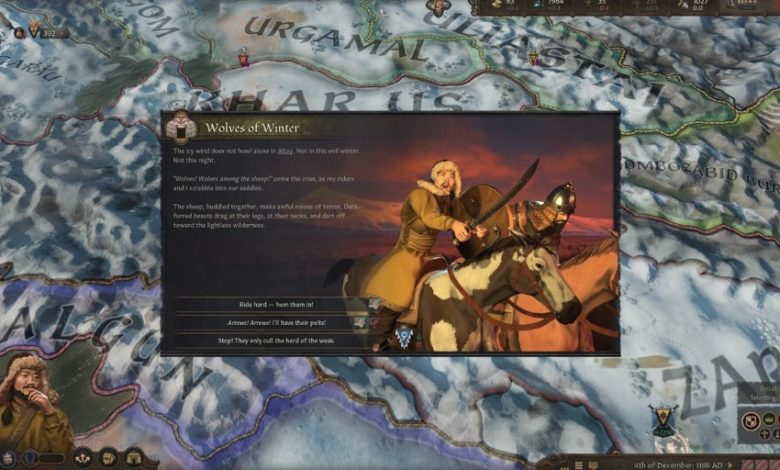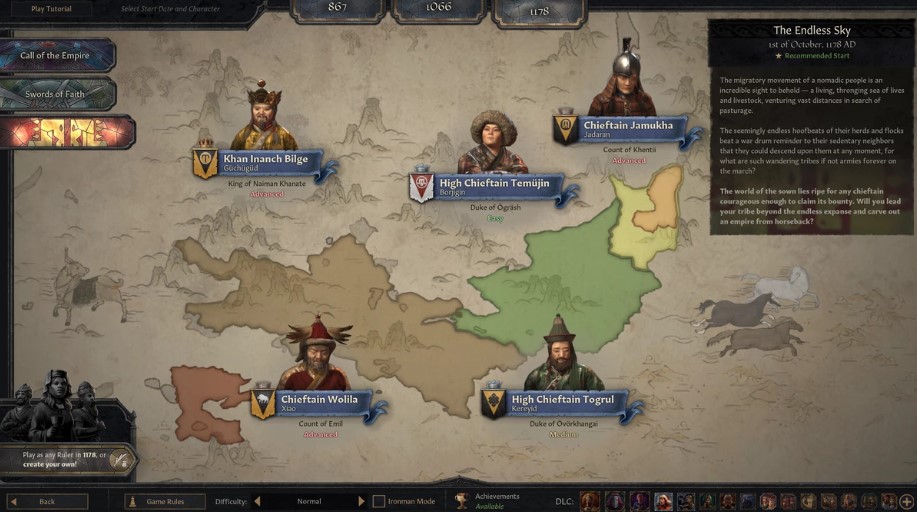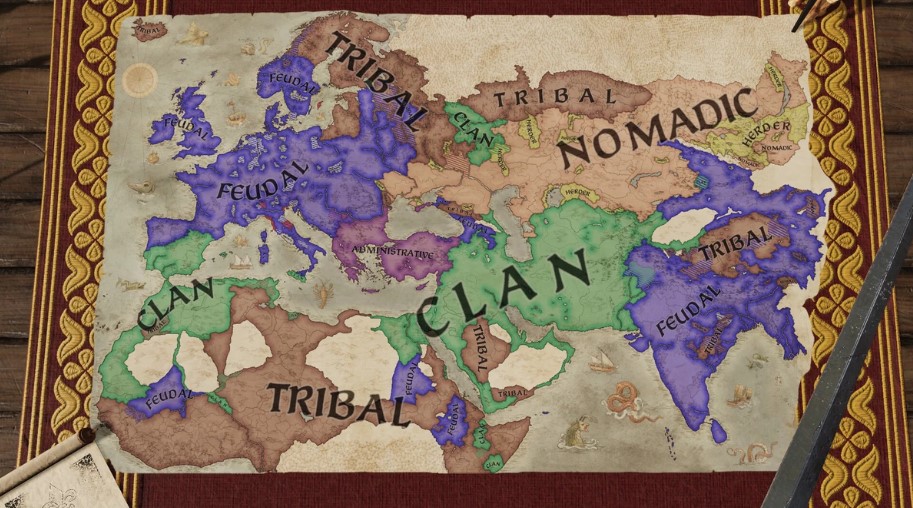Crusader Kings III: Khans of the Steppe DLC Review – The Steppe Wind of Change

On April 28, 2025, the next addition to Crusader Kings III , Khans of the Steppe, is released, the second major expansion within the fourth chapter of the game. Inspired by the era of the Mongol conquests and nomadic culture, developers from Paradox Interactive invite players to immerse themselves in the harsh and dynamic life of the Great Steppe. This addition, released together with patch 1.16, promises not only to expand the gameplay with new mechanics, but also to give a fresh look at the management of empires. Let’s find out whether Khans of the Steppe lives up to the expectations of fans and is it worth your attention.
The Legacy of Genghis Khan
Khans of the Steppe takes players to a world of nomadic tribes where survival depends on mobility, strength and cunning. The central figure of the expansion is the young Temujin, the future Genghis Khan, whose fate sets the tone for the entire expansion. A new starting bookmark allows you to begin the game as him, offering to rewrite the history of the Mongol Empire or create your own legend. The atmosphere of steppe life is conveyed magnificently: from the harsh landscapes to cultural details, such as the celebration of Tsagaan Sar (Mongolian New Year) and the holding of the kurultai – a council where the fate of tribes is decided.
The expansion focuses on a nomadic lifestyle, which is different from the traditional feudal structures of Crusader Kings III. There is no tie to castles or cities – your strength lies in abundant herds, mobility and military might. The “Seasons of the Steppe” system adds dynamics: the fertility of the land changes over time, forcing nomads to migrate in search of better pastures. This creates a sense of constant movement and adaptation, which fits the theme perfectly.

Nomadic rule and domination
The key feature of Khans of the Steppe is the Nomadic Government system. It radically changes the approach to governing the state. Instead of taxes and land holdings, the main resource is the “Herd”, representing the livestock and wealth of your people. The Herd is used for diplomacy, trade and the creation of military units – Horde Riders, who form the backbone of your army. The larger the Herd, the higher your Dominance stat, reflecting the fear and respect you inspire. Subordination of vassals now depends on their “Obedience”, which adds a new layer to governance.
The Tributaries system offers a flexible alternative to traditional vassal relationships. You can establish tributary ties with your neighbors, gaining resources and support while leaving them relatively independent. This is especially useful for nomadic leaders who value mobility over direct control over land. The mechanic fits perfectly into the historical context, where steppe peoples often forced sedentary states to pay tribute.

Another interesting new feature is the expanded raiding capabilities. Raids are now more strategic, with new types of objectives, including plundering resources or capturing territories. This makes playing as a nomad aggressive but exciting, especially if you aspire to become the Scourge of God, uniting the steppe under your banner.
Cultural color and historical authenticity
Khans of the Steppe dives deep into Mongolian culture. In addition to the kurultai, players can participate in traditional events such as archery competitions or horse racing, adding to the roleplaying immersion. The new Mongolian succession system allows for the transfer of power to the most worthy heir, reflecting the historical realities of steppe societies.
Paradox Interactive has tried to make the expansion feel authentic, but not without compromises. For example, the nomadic rule system is universal for all steppe cultures, which simplifies gameplay but slightly blurs the distinctions between, say, the Mongols and the Turks. However, the attention to detail, such as unique events and visual style, makes playing as the steppe rulers a memorable experience.

Technical aspects and content
The expansion comes with patch 1.16, which adds free mechanics such as confederations and new raid targets available to all players. However, the main novelty is, of course, the nomadic rule, exclusive to the DLC. Visually, the game remains at its best: the steppe landscapes, character portraits and interface harmoniously complement the theme. The soundtrack with ethnic motifs enhances the atmosphere, although there could have been more new tracks.
The amount of content in Khans of the Steppe is impressive, but it still falls short of the upcoming All Under Heaven expansion, which will add China, Japan, and Southeast Asia. However, for its price ($19.99), the expansion offers enough new content to justify the purchase, especially for those who like to play aggressive and mobile cultures.

Is it worth playing?
Khans of the Steppe is not a revolution for Crusader Kings III, but it is a quality addition that enriches the game with a new style of rule and cultural flavor. It is ideal for those who want to try themselves in the role of a nomadic khan crushing empires, or rewrite the history of Genghis Khan. For fans of the series, this is a must-buy, especially if you value deep mechanics and historical atmosphere. Newcomers will need to master the base game first, as nomadic rule requires an understanding of the basic systems.




